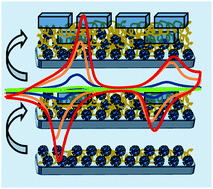Compact microcubic structures platform based on self-assembly Prussian blue nanoparticles with highly tuneable conductivity†
Abstract
Control of molecular and supramolecular properties is used to obtain a new advanced hybrid material based on Prussian blue


 Please wait while we load your content...
Please wait while we load your content...